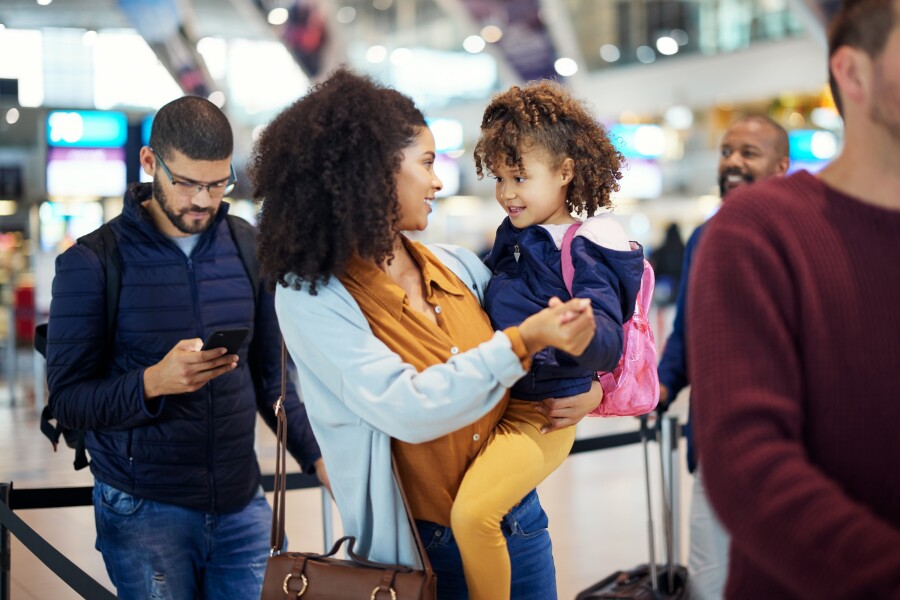
Introduction to the Families on the Fly Initiative
Traveling through airport security can be a challenging experience for many, especially for families with young children. The process often involves managing strollers, dealing with toddlers, and handling additional items like baby food and bottles. To address these challenges, the U.S. Department of Homeland Security (DHS) has introduced the Families on the Fly initiative. This program aims to provide dedicated screening lanes for families at select airports, making the process less stressful while maintaining high security standards.
Where Will Dedicated Screening Lanes Be Available?
The rollout of the Families on the Fly program will begin at Orlando International Airport (MCO) in Florida and Charlotte-Douglas International Airport (CLT) in North Carolina. These airports were chosen because they are popular among families with small children. In the next phase, the program will expand to John Wayne Airport (SNA) in Orange County, California, and Daniel K. Inouye International Airport (HNL) in Honolulu, Hawai'i. Future expansions are planned for Charleston International Airport (CHS) in South Carolina, Jacksonville International Airport (JAX) in Florida, Rhode Island T.F. Green International Airport (PVD), Luis Muñoz Marín International Airport (SJU) in Puerto Rico, and Tampa International Airport (TPA) in Florida. Additional airports may be added depending on the program’s success.
Why Now?
The decision to implement this initiative comes at a time when travelers are increasingly frustrated with long wait times at airport security. Post-pandemic travel has surged, leading to longer lines and operational backlogs. According to travel expert Paul Stewart, the Families on the Fly program is a response to growing dissatisfaction among families and other travelers who want a smoother and faster security experience.
Stewart also notes that the summer travel season is an ideal time for the program's launch. During this period, family travel peaks due to school breaks, and delays caused by families going through security are likely to be at their highest. Additionally, DHS has made other recent changes to airport security procedures, such as eliminating the need for travelers to remove their shoes, which could be part of a broader effort to streamline the process.
Benefits of Dedicated Family Lanes
Dedicated family screening lanes could offer several benefits. For parents, these lanes could reduce the stress of managing children and luggage during security checks. They could also help alleviate congestion in regular lanes, allowing other travelers to move through security more quickly. Travel expert Katy Nastro believes that these lanes are part of a larger effort by DHS to implement long-considered changes that have now been finalized.
In other countries, similar programs have shown promising results. Jesse Neugarten, founder and CEO of Dollar Flight Club, has used dedicated family lanes in Australia and New Zealand. He reports that these lanes helped him skip long lines and avoid the usual stress of managing bags and strollers with his children. “It made the entire day smoother and the trip more enjoyable,” he says.
Potential Challenges
While the concept of dedicated family lanes seems beneficial, there are potential challenges. The success of the program depends heavily on adequate staffing and clear signage. If these lanes are not properly managed, they could become confusing or even counterproductive. Paul Stewart warns that if the lanes are under-staffed or left unused during off-peak hours, they might cause more problems than they solve.
There is also the risk that some families may choose not to use the dedicated lanes if they perceive them as slower. Jamie Davis Smith, a writer and mother of four, shares her own experience where a dedicated lane ended up being slower than the regular line. She now avoids using such lanes when possible.
Conclusion
The Families on the Fly initiative represents a positive step toward making air travel more family-friendly. While there are potential challenges, the program has the potential to significantly reduce stress for families and improve the overall airport experience. As the program expands, its effectiveness will depend on careful implementation and ongoing evaluation. Only time will tell if it will successfully meet the needs of travelers across the United States.
